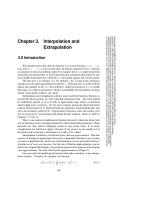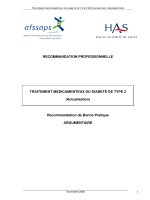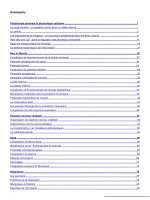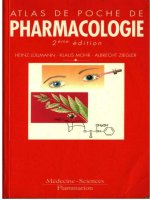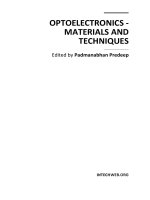Thrombosis and thromboembolism - part 1 pptx
Bạn đang xem bản rút gọn của tài liệu. Xem và tải ngay bản đầy đủ của tài liệu tại đây (542.18 KB, 39 trang )
ISBN: 0-8247-0646-3
This book is printed on acid-free paper.
Headquarters
Marcel Dekker, Inc.
270 Madison Avenue, New York, NY 10016
tel: 212-696-9000; fax: 212-685-4540
Eastern Hemisphere Distribution
Marcel Dekker AG
Hutgasse 4, Postfach 812, CH-4001 Basel, Switzerland
tel: 41-61-261-8482; fax: 41-61-261-8896
World Wide Web
The publisher offers discounts on this book when ordered in bulk quantities. For
more information, write to Special Sales/Professional Marketing at the headquar-
ters address above.
Copyright 2002 by Marcel Dekker, Inc. All Rights Reserved.
Neither this book nor any part may be reproduced or transmitted in any form or
by any means, electronic or mechanical, including photocopying, microfilming,
and recording, or by any information storage and retrieval system, without per-
mission in writing from the publisher.
Current printing (last digit):
10987654321
PRINTED IN THE UNITED STATES OF AMERICA
For our children and the children of those
lost on September 11, 2001
Series Introduction
For the past decade, I have had the good fortune of serving as Editor-in-Chief
of the Fundamental and Clinical Cardiology series of books published by Marcel
Dekker, Inc. These books have delved into the many basic and clinical subjects
within the field of cardiovascular medicine. They have facilitated the compilation
and integration of rapidly evolving knowledge for both the clinician and the re-
search scientist. This series is composed of books that have received lavish criti-
cal acclaim because they adhere to the imperative of academic excellence. The
publisher and I take pride in selecting topics that are timely, relevant, and in-
sightful and in choosing book editors who are devoted and committed to per-
fecting every aspect of their work.
It is a special treat for me to wear two hats with the publication of Thrombo-
sis and Thromboembolism. As co-editor of this book, I am pleased to be contribut-
ing the forty-sixth volume to this series, which provides me with the opportunity
to reminisce pleasantly about my previous contribution, Prevention of Venous
Thromboembolism, published in 1993, as the twelfth volume in this series. In
both cases, I felt privileged to work with such a dedicated and top-of-the-line
publisher. I do believe that Thrombosis and Thromboembolism will fulfill an
otherwise unmet need within the community of physicians and scientists with
particular interest in this field.
Samuel Z. Goldhaber
v
Foreword
Few areas of medicine have evolved as quickly on so many fronts as the field
of thrombosis and thromboembolism. The underlying science continues to pro-
gress, with the discovery of the genetic bases of the thrombophilias, exemplified
by the characterization of mutations in Factor V, furnishing but one example.
The intriguing links between the coagulation and fibrinolytic pathways and in-
flammation are gaining increased recognition.
Progress in the clinic in regard to thrombosis and thromboembolism has
evolved apace. Within this volume, individual chapters illustrate these clinical
advances in many ways. Large observational studies and pools of data emerging
from international cooperation have afforded much new insight into the natural
history and outcomes of thromboembolic diseases. For example, diagnosis of
thromboembolic disease has progressed biochemically, with the increased use of
the D dimer as a first-line screening test for pulmonary embolism. Advances
have also come from application of cross-sectional imaging techniques, such as
computed tomography or magnetic resonance imaging, and have found increasing
application in the diagnosis of pulmonary embolism.
Perhaps therapeutic innovation has proven most promising. The introduc-
tion into daily clinical practice of low-molecular-weight heparins, novel thieno-
pyridine antagonists of the platelet ADP receptor, and several varieties of inhibi-
tors of glycoprotein IIb/IIIa has provided a dizzying array of therapies. The
interventional approaches to thromboembolic disease have gained new life in
recent years. Catheter-directed thrombolysis, percutaneous clot extraction, and
surgical embolectomy are finding their way into clinical practice.
For the clinician, this perplexing array of diagnostic and therapeutic possi-
bilities presents a daily challenge. The contributors to this volume, assembled
by Drs. Goldhaber and Ridker, provide a roadmap for the practitioner, guiding
application of these diagnostic and therapeutic tools. The practical clinical infor-
mation conveyed in this timely compilation rests on a firm scientific foundation.
Yet the very success and rapid pace of clinical science in the area of throm-
bosis and thromboembolism have bred controversy and confusion in many areas.
vii
viii Foreword
A number of important questions remain outstanding. The clinical application of
markers of hemostatic function and long-term risk for thromboembolism and
other vascular diseases remains controversial. How do we apply emerging mark-
ers of inflammation, related to risk of arterial thrombosis, in daily practice?
Should we routinely measure novel markers of risk such as C-reactive protein?
If so, in what populations and with what clinical consequences? These issues are
considered in Chapters 1 and 2. What is the place of hormone replacement therapy
in light of continued concerns regarding increased thrombotic risks? Chapter 4
considers this quandary in some detail. In the patient undergoing coronary inter-
vention, our pharmacological tools have become so effective that we risk paying
the price of increased bleeding complications. The optimal deployment of anti-
thrombotic strategies in the context of acute vascular interventions engenders
much discussion. Chapters 5, 6, and 10 address this quickly changing field. The
role of antiplatelet therapy is expanding to new patient populations, including
those with peripheral vascular disease. What patient populations should we target
for chronic thienopyridine use? What are the benefits versus costs for expanded
preventive therapy with antiplatelet agents? Chapter 7 grapples with these diffi-
cult issues. Recently, concerns have emerged regarding diminished benefits of
angiotensin-converting-enzyme inhibition in individuals receiving antiplatelet
therapy with aspirin, and Chapter 8 reviews this clinically important issue criti-
cally and provides a ‘‘bottom line’’ for daily practice. The failure of the oral
antiglycoprotein IIb/IIIa antagonists in clinical trials, discussed in Chapter 6, still
seeks an adequate mechanistic explanation. Several chapters address the appro-
priate deployment of diagnostic and treatment strategies for venous thromboem-
bolism and pulmonary embolism. Practitioners will find the straightforward algo-
rithms, such as those provided in Chapter 15, of daily utility.
In sum, Drs. Goldhaber and Ridker have provided us with a ‘‘catalogue
raisone
´
e’’ of current practice and controversies. Given the pace of innovation
and clinical experience, one anticipates the need for a renewed look at these
issues in the coming years.
Peter Libby
Preface
Thrombosis and Thromboembolism serves the medical and scientific community
by compiling a timely and comprehensive update on this rapidly evolving field.
Our contribution covers fundamental and clinical aspects of this broad topic and
focuses on both arterial and venous disease, ranging from acute coronary syn-
dromes to acute pulmonary embolism.
Vascular medicine is now recognized as a crucially important component
of cardiovascular medicine, which is no longer confined to the study of acute
myocardial infarction. Multiple sessions on peripheral arterial disease, pulmonary
embolism, and deep venous thrombosis are now included at the three major car-
diovascular meetings: the American Heart Association, the American College of
Cardiology, and the European Society of Cardiology. Attendance is often ‘‘stand-
ing room only.’’ Despite keen interest by cardiovascular physicians and scientists,
the field is interdisciplinary and is shared by internists, hematologists, angiolo-
gists, pulmonologists, epidemiologists, vascular radiologists, and cardiovascular
surgeons. The interdisciplinary involvement in thrombotic problems is perhaps
exemplified by the soaring membership in the International Society on Thrombo-
sis and Haemostasis, which celebrated an all-time high in registration at its most
recent meeting in Paris.
Our book is written to assist the practicing physician, clinical investigator,
and scientist dedicated to translational research. We have devoted Part I to funda-
mental issues of hypercoagulability, including the pivotal role of inflammation,
several crucial hypercoagulable states, and the topic of hormone replacement
therapy. Part II updates the therapy of acute coronary syndromes, including acute
myocardial infarction (both ST-segment and non-ST-segment elevation) and
unstable angina. We focus on novel approaches using low-molecular-weight
heparins, direct thrombin inhibitors, and platelet inhibitors. Part III provides a
contemporary update of the miraculous interventions that have occurred in the
treatment of arterial thrombosis in the catheterization laboratory. These successes
are due, in part, to adjunctive antithrombotic and antiplatelet therapy. Part IV
focuses on venous thromboembolism, an area that for decades has been neglected,
ix
x Preface
but which is now being recognized as ‘‘the other half’’ of the key to managing
thrombotic disorders. This section includes state-of-the-art chapters on etiology,
diagnosis, and pharmacological management of pulmonary embolism and deep
venous thrombosis. Part V concludes the book with the remarkable achievements
in the interventional laboratory and operating room for patients stricken with
extensive and potentially life-threatening venous thromboembolism.
In addition to our role as co-editors, we co-authored 5 of the 20 chapters.
In all cases, we ensured that the chapters are filled with summary tables, illustra-
tive figures, and recent references. Our philosophy was to provide each chapter
with a critical analysis of the topic along with conclusions based upon global
assessment of all available knowledge. Thrombosis and Thromboembolism has
achieved the balance for which we strived.
We wish to thank some of the individuals who helped make this book
possible. Peter Libby, M.D., Chief of the Cardiovascular Division at Brigham
and Women’s Hospital, provided the personal encouragement, set the standard
of excellence, and has served as a role model for us. We appreciate greatly his
Foreword. We have also benefited immeasurably from the mentorship of Eugene
Braunwald, M.D., and Arthur Sasahara, M.D., both luminaries in the field of
thrombosis and thromboembolism. We are grateful to the individual contributors
who have taken time from their multiple demands to write and revise their excel-
lent chapters. With regard to the administrative challenge, Ms. Nicole Grimaldi
performed exceptionally. A special word of thanks is due to the professional
staff of Marcel Dekker, Inc., especially to Ms. Sandra Beberman, Vice President.
Finally, we are profoundly appreciative of our families who supported us during
the evolution and completion of this book.
Samuel Z. Goldhaber
Paul M. Ridker
Contents
Series Introduction v
Foreword (Peter Libby) vii
Preface ix
Contributors xv
I. Hypercoagulability
1. Inflammation and Arterial Thrombosis 1
David A. Morrow and Paul M. Ridker
2. Homocysteine and Vascular Disease Risk 35
Peter W. F. Wilson
3. Antiphospholipid Antibody Syndrome 49
Mark A. Crowther and Jeffrey S. Ginsberg
4. The Epidemiology of Postmenopausal Hormone Therapy and
Cardiovascular Disease 67
Francine Grodstein and Meir J. Stampfer
II. Clinical Pharmacology: Acute Coronary Syndromes
5. Low-Molecular-Weight Heparins and Direct Thrombin
Inhibitors in Acute Coronary Syndromes 79
Robert P. Giugliano
6. Platelet Glycoprotein IIb/IIIa Inhibition in Acute Coronary
Syndromes 101
Christopher P. Cannon
xi
xii Contents
7. Aspirin, Ticlopidine, and Clopidogrel 125
Mark A. Creager
8. Clinical Accomplishments of ACE Inhibition Therapy: With and
Without Aspirin 145
Marc A. Pfeffer
III. Diagnostic Laboratory and Catheter Interventions: Arterial
9. Detection of Peripheral Arterial Occlusion in the Vascular
Laboratory 161
Marie Gerhard-Herman
10. Antithrombotic Therapy During Coronary Intervention 173
Jeffrey J. Popma and Arman T. Askari
11. Percutaneous Interventions for Obstructive Atherosclerotic
Peripheral Arterial Disease 189
Joseph H. Garasic and Andrew C. Eisenhauer
IV. Venous Thromboembolism
12. Venous Thromboembolism: Clinical Impact and Multifactorial
Etiology 211
Samuel Z. Goldhaber
13. Integrated Diagnostic Approach to Venous Thromboembolism 225
Henri Bounameaux
14. The Management of Massive Pulmonary Embolism 235
Jeremy P. Feldman and Samuel Z. Goldhaber
15. Thrombolysis in Pulmonary Embolism 247
Samuel Z. Goldhaber
16. Optimal Duration of Anticoagulation Following Venous
Thromboembolism Among Patients With and Without Inherited
Thrombophilia 261
Gavin J. Blake and Paul M. Ridker
Contents xiii
17. The Expanded Role of an Interdisciplinary Anticoagulation
Service 283
Kanella V. Tsilimingras and Kristen Hallisey
V. Catheter and Surgical Interventions: Venous
18. Interventional Venous Angiography 295
Gordon Haugland, Stephen Bravo, and Michael F. Meyerovitz
19. Catheter-Directed Thrombolysis for Lower Extremity Deep
Vein Thrombosis 311
Mark W. Mewissen
20. Surgical Embolectomy for Pulmonary Embolism 321
Lishan Aklog
Index 355
Contributors
Lishan Aklog, M.D. Associate Surgeon, Cardiac Surgery Division, Brigham
and Women’s Hospital, and Assistant Professor of Surgery, Harvard Medical
School, Boston, Massachusetts
Arman T. Askari, M.D. Fellow in Cardiovascular Medicine, Department of
Cardiology, The Cleveland Clinic Foundation, Cleveland, Ohio
Gavin J. Blake, M.B., M.Sc., M.R.C.P., M.R.C.P.I. Cardiology Fellow, Car-
diovascular Division, Brigham and Women’s Hospital, and Research Fellow in
Medicine, Harvard Medical School, Boston, Massachusetts
Henri Bounameaux, M.D. Chief, Division of Angiology and Hemostasis, Uni-
versity Hospital of Geneva, and Associate Professor of Medicine, Geneva School
of Medicine, Geneva, Switzerland
Stephen Bravo, M.D. Clinical Instructor, Cardiovascular and Interventional
Radiology Service, Brigham and Women’s Hospital, Boston, Massachusetts
Christopher P. Cannon, M.D. Cardiovascular Division, Brigham and Wom-
en’s Hospital, and Assistant Professor of Medicine, Harvard Medical School,
Boston, Massachusetts
Mark A. Creager, M.D. Associate Professor of Medicine, Harvard Medical
School, and Director, Vascular Center, Brigham and Women’s Hospital, Boston,
Massachusetts
Mark A. Crowther, M. D. Assistant Professor of Medicine, McMaster Univer-
sity, Hamilton, Ontario, Canada
xv
xvi Contributors
Andrew C. Eisenhauer, M.D. Director, Interventional Cardiovascular Medi-
cine Service, Cardiovascular Division, Brigham and Women’s Hospital, and
Assistant Professor of Medicine and Radiology, Harvard Medical School, Boston,
Massachusetts
Jeremy P. Feldman, M.D. Pulmonary and Critical Care Medicine Fellow, Uni-
versity of California at San Francisco, San Francisco, California
Joseph M. Garasic, M.D. Director, Peripheral Vascular Intervention, Cardio-
vascular Division, Massachusetts General Hospital, and Instructor in Medicine,
Harvard Medical School, Boston, Massachusetts
Marie Gerhard-Herman, M.D. Associate Physician, Cardiovascular Divi-
sion, Brigham and Women’s Hospital, and Assistant Professor of Medicine, Har-
vard Medical School, Boston, Massachusetts
Jeffrey S. Ginsberg, M.D., F.R.C.P.C. Professor of Medicine, Department of
Medicine, and Director, Clinical Thromboembolism Program, Hamilton Civic
Hospital Research Centre, McMaster University, Hamilton, Ontario, Canada
Robert P. Giugliano, M.D., S.M. Associate Physician, Cardiovascular Divi-
sion, Brigham and Women’s Hospital, and Assistant Professor of Medicine, Har-
vard Medical School, Boston, Massachusetts
Samuel Z. Goldhaber, M.D. Director, Venous Thromboembolism Research
Group; Director, Cardiac Center’s Anticoagulation Service; Staff Cardiologist,
Cardiovascular Division, Brigham and Women’s Hospital; and Associate Pro-
fessor of Medicine, Department of Medicine, Harvard Medical School, Boston,
Massachusetts
Francine Grodstein, D.Sc. Associate Professor of Medicine, Department of
Medicine, Brigham and Women’s Hospital and Harvard Medical School, Bos-
ton, Massachusetts
Kristen Hallisey, BSN, RN, CVN Surgical Nurse, Connecticut Surgical
Group, Hartford, Connecticut
Gordon Haugland, M.D. Assistant Professor of Radiology, Division of Vascu-
lar and Interventional Radiology, Department of Radiology, SUNY–Downstate
Medical Center, Brooklyn, New York
Peter Libby, M.D. Chief, Cardiovascular Division, Brigham and Women’s
Hospital, and Mallinckrodt Professor of Medicine, Harvard Medical School,
Boston, Massachusetts
Contributors xvii
Mark W. Mewissen, M.D. Vascular Interventionalist/Vascular Disease Con-
sultant, Vascular Lab, Wisconsin Heart and Vascular Clinics, S.C., and Clinical
Associate Professor of Radiology, Medical College of Wisconsin, Milwaukee,
Wisconsin
Michael F. Meyerovitz, M.D. Director, Interventional Radiology, St. Vin-
cent’s Hospital, Worcester Medical Center, Worcester, Massachusetts
David A. Morrow, M.D. Instructor in Medicine, Cardiovascular Division,
Brigham and Women’s Hospital and Harvard Medical School, Boston, Massa-
chusetts
Marc A. Pfeffer, M.D., Ph.D. Professor of Medicine, Cardiovascular Division;
Medical Director, Partners Research and Education Program (PREP), Brigham
and Women’s Hospital; and Professor of Medicine, Harvard Medical School,
Boston, Massachusetts
Jeffrey J. Popma, M.D., F.A.C.C., F.S.C.A.I. Director, Interventional Cardi-
ology, Brigham and Women’s Hospital, and Associate Professor of Medicine,
Harvard Medical School, Boston, Massachusetts
Paul M. Ridker, M.D., M.P.H. Director, Center for Cardiovascular Disease
Prevention, Brigham and Women’s Hospital, and Associate Professor of Medi-
cine, Harvard Medical School, Boston, Massachusetts
Meir J. Stampfer, M.D., D.Sc. Professor of Epidemiology and Nutrition, De-
partment of Medicine, Harvard School of Public Health, Boston, Massachusetts
Kanella V. Tsilimingras, BS Pharm. Assistant Director, Anticoagulation Ser-
vice, Brigham and Women’s Hospital, Boston, Massachusetts
Peter W. F. Wilson, M.D. Professor of Medicine, Department of Endocrinol-
ogy, Boston University School of Medicine, Boston, Massachusetts
About the Editors
Samuel Z. Goldhaber is Associate Professor of Medicine, Harvard Medical
School, and Staff Cardiologist in the Cardiovascular Division of Brigham and
Women’s Hospital (BWH), Boston, Massachusetts. He is Director of the BWH
Cardiac Center’s Anticoagulation Service and Director of the Venous Thrombo-
embolism Research Group. He specializes in the epidemiology, diagnosis, treat-
ment, and prevention of pulmonary embolism. Dr. Goldhaber is the author of
more than 200 book chapters, original reports, and review articles. He is Editor-
in-Chief of more than 40 books in the Fundamental and Clinical Cardiology
book series (Marcel Dekker, Inc.). A Fellow of the American College of Chest
Physicians and the American College of Cardiology, he received the A.B. degree
(1972) from Harvard College, Cambridge, Massachusetts, and the M.D. degree
(1976) from the Harvard Medical School, Boston, Massachusetts.
Paul M. Ridker is Director, Center for Cardiovascular Disease Prevention, Brig-
ham and Women’s Hospital, and Associate Professor, Harvard Medical School,
Boston, Massachusetts. Dr. Ridker is the principal investigator of multiple feder-
ally funded grants targeting novel risk factors for thrombosis and thrombosis
prevention and the recipient of the Established Investigator Award from the
American Heart Association and the Distinguished Clinical Scientist Award from
the Doris Duke Charitable Foundation. An elected member of the American Soci-
ety for Clinical Investigation and the American Society for Epidemiology, Dr.
Ridker received the B.S. degree (1981) from Brown University, Providence,
Rhode Island, the M.D. degree (1986) from the Harvard Medical School, Boston,
Massachusetts, and the M.P.H. degree (1992) from the Harvard School of Public
Health, Boston, Massachusetts.
1
Inflammation and Arterial Thrombosis
David A. Morrow and Paul M. Ridker
Brigham and Women’s Hospital and Harvard Medical School,
Boston, Massachusetts
I. INTRODUCTION
Together, laboratory and clinical data have provided substantial evidence sup-
porting a fundamental role of inflammation in atherothrombosis (1). Laboratory
researchers have identified macrophages, T-lymphocytes, and their biochemical
messengers as key participants in the initiation, progression, and destabilization
of atherosclerotic vascular disease (2). These pathobiological insights have di-
rected the attention of clinical investigators to inflammatory markers as potential
novel indicators of underlying atherosclerosis and cardiovascular risk. These ef-
forts have produced a consistent body of epidemiological data demonstrating
an association between clinical evidence of inflammation and increased risk of
atherothrombosis (3). Moreover, the expansion in our understanding of athero-
genesis has prompted reevaluation of the therapeutic mechanisms for several es-
tablished pharmacological interventions, and pointed in new directions for the
prevention and treatment of atherosclerotic vascular disease (2).
II. LABORATORY AND PATHOLOGIC EVIDENCE
A. Inflammation in Atherogenesis
Pathological examination of the mature atheroma demonstrates a core composed
of a mixture of inflammatory and smooth muscle cells, lipids, and necrotic cellu-
lar debris covered by a protective fibrous cap (4,5). Although the evolution of
this advanced lesion is complex and occurs in response to a varied group of
endothelial insults, the central processes appear largely stereotyped, involving a
number of well-described inflammatory elements (1).
1
2 Morrow and Ridker
The vascular endothelium is a highly functional synthetic organ capable
of regulating vasomotor function, oxidizing lipoproteins, and directing cellular
recruitment and migration through the production of an array of intercellular
messengers (6). This organ may be injured by a number of possible insults, in-
cluding, but not limited to, oxidative stress (7,8), hemodynamic forces (9), modi-
fied lipoproteins (10), infectious agents (11–13), and other cytotoxic substances
such as advanced glycosylation products and homocysteine (14). Although ini-
tially protective, the responding activation and migration of inflammatory and
smooth muscle cells coordinated by the vascular endothelium eventually conspire
to promote the development of the atheroma (1).
Endothelial cell dysfunction is marked by upregulation of intercellular ad-
hesion molecules and production of chemokines that mediate increased adhesion
and migration of monocyte-derived macrophages and T-lymphocytes. Intercellu-
lar adhesion molecules, such as vascular cell adhesion molecule 1 (VCAM-1),
E-selectin, and intercellular adhesion molecule 1 (ICAM-1) (15–20) interact with
integrins on the surface of leukocytes to facilitate movement of inflammatory
cells into the subendothelial space (21,22). Concurrently, multiple chemoattrac-
tant substances, including thrombin, connective tissue degradation products, oxi-
dized LDL, and specific molecules secreted by endothelial and smooth muscle
cells [monocyte chemotactic protein 1 (MCP-1), interleukin-8 (IL-8), and macro-
phage colony-stimulating factor (M-CSF)] enhance the recruitment of inflamma-
tory cells to the site of injury (23–27). Directed by these mediators, a cellular
inflammatory infiltrate is established within the arterial intima (28–30). With the
uptake of LDL by subendothelial macrophages, they are transformed into the
lipid-laden foam cells that characterize the fatty streak, the first recognizable
progenitor of the advanced atherosclerotic lesion (4,31–33).
As they enter the arterial intima, arriving macrophages and T-lymphocytes
generate inflammatory cytokines and growth factors that reinforce the influx of
mononuclear leukocytes and the production of foam cells, and that initiates the
migration and proliferation of vascular smooth muscle cells, which contribute to
the maturation of the fatty streak into the intermediate atherosclerotic lesion. In
particular, the elaboration of interleukin-1 (IL-1) (34–36), interleukin-6 (IL-6)
(37–39), and tumor necrosis factor alpha (TNF-α) (40,41) augment the expres-
sion of adhesion molecules, as well as promote the oxidation and uptake of LDL
(18,33). Simultaneously released mitogens, including platelet-derived growth fac-
tor, heparin-binding growth factor, and fibroblast growth factor, along with IL-
1 and IL-6, stimulate the proliferation of smooth muscle cells that lead to forma-
tion of an intermediate plaque composed of layers of monocytes and smooth
muscle cells (29,42–49). In addition to promoting cellular infiltration of the ma-
turing atheroma, macrophage-monocytes enhance the transport and oxidation of
LDL and produce reactive oxygen species that perpetuate injury to the vascular
endothelium (29,50). In this fashion, initial endothelial dysfunction results in a
series of interdependent processes that begin as a protective response but may
Inflammation and Arterial Thrombosis 3
eventuate a self-perpetuating pathological progression toward the complex ather-
oma (1,51).
In the advanced stages of this progression, a resilient fibrous cap forms
over the core of intra- and extracellular lipid, inflammatory monocytes, smooth
muscle cells, and necrotic debris (1,51). This protective cap is composed of an
extracellular matrix that derives its strength primarily from types I and III colla-
gen as well as elastin synthesized by vascular smooth muscle cells (46,52). The
dense fibrous matrix constitutes a barrier between the highly prothrombotic con-
tents of the atheroma core and circulating platelets and coagulation proteins. Vas-
cular smooth muscle cells maintain this barrier in the face of macrophage produc-
tion of collagenases, elastases, and proteases that may cause areas of focal
thinning or erosion (53,54). When these forces determining the integrity of the
extracellular matrix become unbalanced toward compromise of the barrier, expo-
sure of the atheroma core promotes arterial thrombosis. In some cases, the throm-
bus is nonocclusive and may, in the absence of symptoms, become organized
and incorporated into the existing advanced atherosclerotic plaque (55–58). As
such, repeated episodes of plaque disruption, mural thrombosis, and organization
with layering of mural thrombi may contribute to progression of the atheroscle-
rotic lesion (59). In contrast, when the forming thrombus leads to abrupt compro-
mise of distal flow, acute tissue ischemia or infarction may result (56).
B. Inflammation and Acute Atherothrombosis
Until recently, it had appeared self-evident that (nonembolic) arterial thrombosis
was the culmination of slow enlargement of the mature atherosclerotic lesion with
progressive encroachment into the arterial lumen. This pathobiological construct
supported the view that the risk of acute thrombosis was dominated by the sever-
ity of arterial stenosis. However, over the past decade, angiographic and patholog-
ical data obtained in the coronary arterial bed have challenged this construct.
Angiography performed prior to or at the time of acute myocardial infarction has
demonstrated that the infarct-related coronary atherosclerotic lesion is frequently
not ‘‘critical’’ by standard angiographic criteria (60–63). Similarly, pathological
examination of culprit lesions has demonstrated that the majority of acute coro-
nary events occur with the formation of thrombus at the site of plaques obstruct-
ing Ͻ50% of the arterial lumen (64). Taken together with evidence for the impor-
tance of plaque disruption in the development of superimposed thrombus (56,65–
69), such data have shifted focus from the degree of luminal stenosis to the mor-
phological and histological characteristics of the atheromatous plaque that deter-
mine its propensity to rupture (52,70).
1. The Vulnerable Plaque
Histological evaluation of ruptured atheromatous plaques has pointed to the cen-
tral role of the fibrous cap in maintaining plaque integrity and suggested the
4 Morrow and Ridker
importance of inflammatory constituents of the atheroma in destabilization of
this protective barrier (52,70). The advanced atheromatous plaque with a thick
fibrous cap, a small lipid core, and a predominance of normal vascular smooth
muscle cells is resistant to compromise. In contrast, lesions with caps that are
thin and friable are more likely to rupture and extrude procoagulant atheromatous
materials from the lipid-rich core (5,56,71). Such ‘‘vulnerable’’ plaques are char-
acterized by a large lipid core and a high density of inflammatory monocytes at
the edge of the lesion, or ‘‘shoulder’’ region (72,73), where plaque disruption
most frequently occurs (57,65,70,74).
Lending further support to the contribution of inflammatory mechanisms
to plaque destabilization, onset of acute thrombosis with or without myocardial
necrosis is marked by the production of a number of inflammatory cytokines
(75–79). In addition, a series of studies have suggested a link between the elabo-
ration of inflammatory cytokines and impairment of the ability of smooth muscle
cells to maintain the integrity of the fibrous cap (52). Interferon-gamma (IFN-γ),
a cytokine produced by T-lymphocytes within the atheroma core, decreases the
production of collagen by vascular smooth muscle cells (80–82). Smooth muscle
cells at the site of plaque rupture or erosion have been found to express high levels
of the transplant antigen HLA-DRα, a protein induced only by IFN-γ among a
wide spectrum of cytokines evaluated (72,83). Further, matrix metalloprotei-
nases, a group of proteolytic enzymes that degrade collagen as well as elastin,
are produced in increased quantities by smooth muscle cells and macrophages
under the influence of cell–cell interactions with T-lymphocytes and the inflam-
matory cytokines, interleukin-1, and tumor necrosis factor (84–88). Histological
studies of human atheroma samples using immunostaining techniques have docu-
mented the presence of metalloproteinases in macrophages and T-lymphocytes,
as well as overlying endothelial cells, with increased enzyme activity found par-
ticularly in the ‘‘shoulder’’ region (54,89).
Thus, the ‘‘vulnerable’’ plaque is typified by a large lipid pool and a thin
or absent fibrous cap (70,74), as well as the predominance of inflammatory mono-
cytes, the expression of HLA-DR antigens, and a decrease in the number smooth
muscle cells (72,90). Each of these features either directly, or through mechanisms
outlined above, implicate an inflammatory contribution. While other factors (91),
such as shear stress (9,92) and vasospasm (93), may also contribute to plaque
destabilization, the participation of inflammation in this process appears central.
2. Platelet Activation, Thrombus Formation,
and Vascular Reactivity
Disruption of the fibrous cap or endothelium exposes collagen, lipids, and
monocyte-bound tissue factor, all of which are potent stimulants of platelet adhe-
sion and aggregation. In addition, tissue factor has strong procoagulant effects
that play an important role in the genesis of thrombus in acute coronary syn-
Inflammation and Arterial Thrombosis 5
dromes (94). Activated macrophages within the atheroma core produce large
amounts of tissue factor, which upon exposure to circulating coagulation proteins
initiate the extrinsic coagulation pathway (95–98). Although the stimuli for tissue
factor expression are not fully characterized, T-lymphocytes acting through spe-
cific cell surface proteins and cell–cell contact can induce its production (86,98).
Vascular inflammation may also influence arterial vasomotor function through
several possible mechanisms. Increased concentrations of thromboxane A2 and its
metabolites produced in acute coronary syndromes (99,100) mediate further platelet
aggregation as well as arterial vasoconstriction (101). Leukocytes also produce en-
dothelin-1, a potent modulator of vasoconstriction. In addition, certain inflammatory
cytokines may increase vascular smooth muscle cell reactivity, as demonstrated
in an animal model with IL-1 (102). Finally, inflammatory infiltrates have been
documented in the arterial adventitia with vascular nerve involvement and thus have
been hypothesized to directly stimulate coronary vasospasm (103).
Figure 1 Inflammation and formation of the fatty streak. Refer to text for details.
ICAM-1, intercellular adhesion molecule 1; MCP-1, monocyte chemotactic protein-1;
M-CSF, macrophage colony-stimulating factor; IL, interleukin. (From Ref. 2.)
6 Morrow and Ridker
As such, a substantial body of data implicate the participation of inflamma-
tory cells and/or mediators during every phase of atherogenesis and arterial
thrombosis, including initiation of the fatty streak, progression to an intermediate
atheroma, maturation of the advanced atherosclerotic lesions, thinning and com-
promise of the fibrous cap, platelet aggregation and thrombosis, and the modula-
tion of coronary vasospasm (Fig. 1).
III. CLINICAL MARKERS OF INFLAMMATION
In spite of continued advancements in the management of acute ischemic heart
disease, morbidity and mortality due to atherosclerotic vascular disease continue
to rise globally (104,105). Thus, the impetus for improving our strategies for the
prevention and management of atherosclerosis has remained strong. In this re-
gard, laboratory and experimental research describing key processes in the initia-
tion, progression, and destabilization of the atheroma have pointed to novel direc-
tions for cardiovascular evaluation and management. In particular, recognition
of the role of inflammation in atherothrombosis has directed attention to inflam-
matory mediators and indicators as potential targets for risk assessment and for
treatment (3).
Epidemiological data have established a well-characterized set of vascular
risk factors, including advanced age, tobacco use, obesity, diabetes, hypertension,
and dyslipidemia. However, up to one-third of first coronary events occur among
individuals without these traditional risk factors (106). Researchers have thus
sought to identify inflammatory indicators that might add to these clinical factors
for predicting myocardial infarction and stroke (107). Candidate markers have
included several of the cytokines (77,108,109) that promote the recruitment of
monocytes in response to endothelial cell dysfunction; intercellular adhesion mol-
ecules (110–112) that mediate the migration of activated monocytes into the
subendothelial space; enzymes (113) that might compromise the integrity of the
protective fibrous cap, as well as the acute-phase proteins that are produced and
released into the systemic circulation in response to inflammatory cytokines. As
an amplified and readily quantified inflammatory signal, the prototypical acute-
phase reactant C-reactive protein (CRP) has been a focus of clinical investigation
to date.
A. High-Sensitivity C-Reactive Protein, Atherosclerosis,
and Atherothrombosis
1. C-Reactive Protein
CRP is a pentameric polypeptide initially described as a reactant to the somatic
C-polysaccharide of Streptococcus pneumonia (114). This acute-phase protein is

